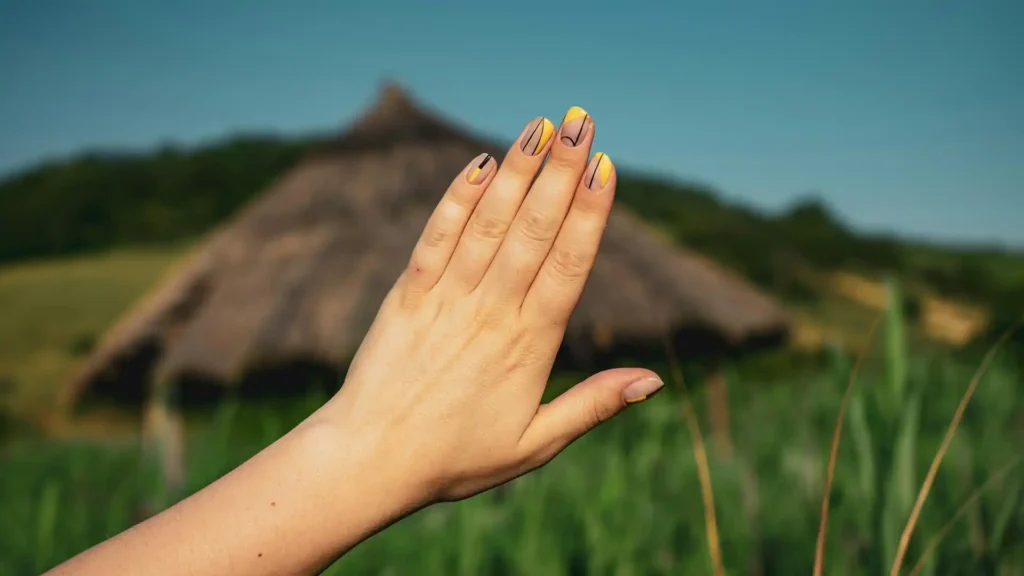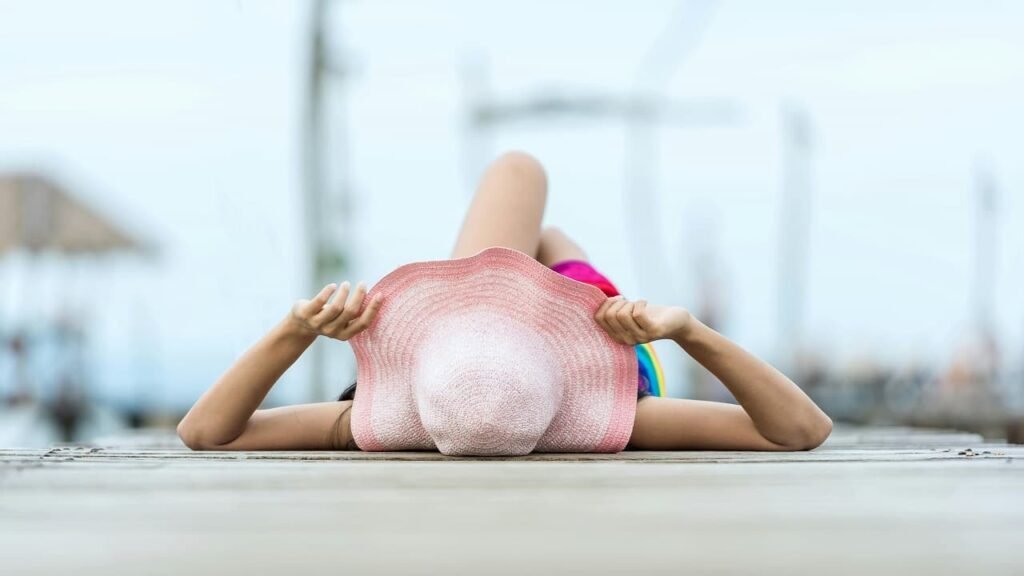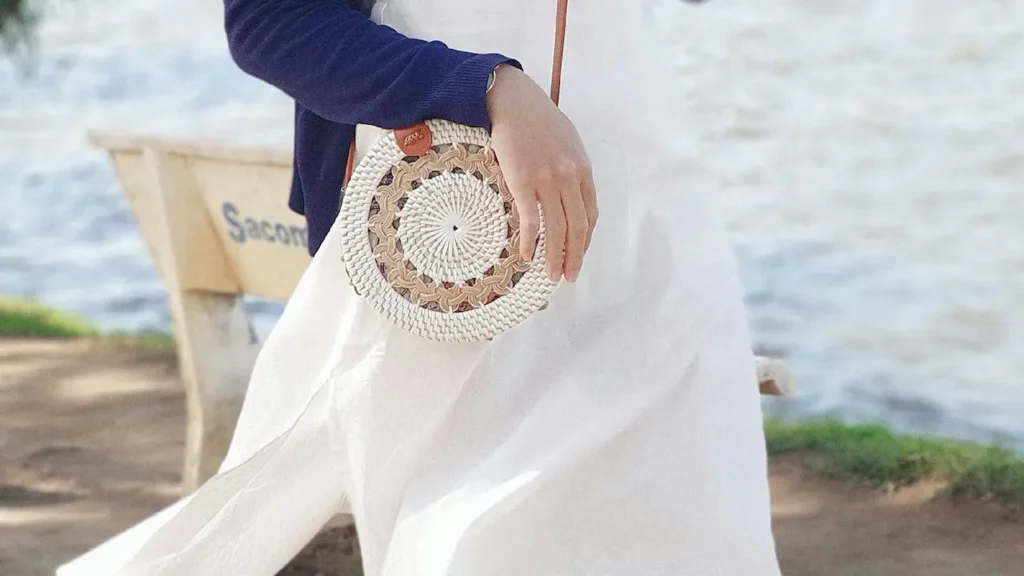Maintaining proper hygiene and keeping your nails moisturized are essentials for overall well-being.
How to Keep Your Nails Moisturized
Just like the skin, nails are highly susceptible to becoming dry, cracked, and brittle, especially when exposed to environmental stressors such as cold weather, low humidity, or frequent contact with harsh chemicals.
When the weather turns colder or the air becomes drier, moisture can easily evaporate from both the skin and nails, leaving them vulnerable to damage. Similarly, the use of cleaning products, detergents, and even nail polish removers can strip the nails of their natural oils, causing them to become fragile and prone to splitting or peeling.
If left untreated, dry nails can result in painful conditions such as hangnails, cracks in the nail plate, and even fungal or bacterial infections due to the compromised nail barrier.
To combat this, moisturization is essential. Experts recommend regularly applying a moisturizer specifically designed for nails and cuticles. Regular moisturizing helps to restore hydration, improve flexibility, and promote nail strength.
These specialized moisturizers are often formulated with ingredients that can deeply penetrate the nail plate (the hard, outer layer of the nail), unlike regular skin moisturizers that may sit on the surface. When choosing a moisturizer for your nails, it’s important to select one that contains nourishing ingredients known for their hydrating and restorative properties.
Lanolin, for example, is a highly effective emollient derived from sheep’s wool, and it is well-known for its ability to lock in moisture and soften dry skin and nails. Research has shown that lanolin can significantly improve skin hydration and is often used in products designed for cracked or damaged cuticles.
Shea butter is another powerhouse ingredient that helps to hydrate and soothe dry nails. Packed with fatty acids, it replenishes moisture and helps to improve the overall texture of the nail and surrounding skin.
Vitamin E, a well-known antioxidant, not only promotes skin health but also strengthens nails by protecting them from oxidative damage caused by environmental stressors. Vitamin E also helps improve circulation in the cuticle area, which is essential for healthy nail growth.
For best results, experts recommend massaging the moisturizer into your nails and cuticles before bedtime. This ensures that the product has time to fully absorb and work its magic while you sleep, which is when your nails are not exposed to external stressors.
Some people even suggest wearing cotton gloves overnight after applying nail cream to further lock in moisture and prevent the moisturizer from rubbing off.
Additionally, it’s important to avoid over-washing your hands or using harsh hand sanitizers, which can exacerbate dryness. If you find that your nails are consistently dry despite moisturizing, it might be a good idea to review your diet and lifestyle.
A lack of key nutrients like omega-3 fatty acids, zinc, and biotin can also contribute to weak, brittle nails. A balanced diet and supplements can work synergistically with moisturizing products to improve the overall health and appearance of your nails.
By following a consistent nail-care routine that includes targeted moisturization, you can help prevent dryness and keep your nails looking healthy, strong, and resilient.
A study published in the International Journal of Dermatology found that moisturizing your nails regularly can significantly reduce nail damage and maintain strength. Hydrated nails are less likely to split or peel.
How to Maintain Proper Nail Hygiene
Proper nail hygiene is one of the most crucial aspects of maintaining healthy nails. It helps prevent a wide range of nail problems, from fungal infections to physical damage. Just like skin, nails are your friendly protectors from harmful microorganisms.
But if not properly cared for, they can become a breeding ground for bacteria, fungi, and other pathogens. Dirty nails, especially when they come into contact with surfaces like soil, food, or water, can easily harbor these microorganisms, leading to infections like onychomycosis (a fungal infection of the nails) or bacterial paronychia (infection of the nail fold).
Washing your nails regularly with soap and water is the first step in maintaining hygiene. Dermatologists recommend that you wash your hands and nails thoroughly after activities like cooking, cleaning, gardening, or using the restroom to remove dirt, oil, and other contaminants.
However, it’s important to dry your nails thoroughly after washing, as moisture can encourage the growth of harmful fungi. If your nails are often exposed to moisture (for example, from frequent hand washing or dishwashing), dermatologists recommend applying a hydrating moisturizer afterward to prevent dryness and cracking, which can lead to infections.
Additionally, avoid using your nails as tools to open cans, peel stickers, or perform other tasks that could cause trauma to the nail bed. The delicate structure of your nails, particularly the nail plate and the surrounding cuticle area, can become damaged with excessive force.
Such damage not only makes the nails more vulnerable to infections but can also lead to painful conditions like hangnails or ingrown nails. Trauma to the nail matrix (the growth area under the cuticle) can even cause permanent nail deformities if not properly cared for.
Nail care professionals, such as Dr. Doris Day, a well-known dermatologist, also emphasize the importance of regularly trimming nails to prevent dirt from accumulating under the nail, where it can be difficult to clean.
Keeping your nails at an appropriate length can prevent them from becoming snagged on fabric or other surfaces, reducing the risk of infection or injury.
Moreover, wearing gloves during activities like cleaning, gardening, or doing dishes is highly recommended. Household cleaning products and harsh chemicals can strip nails of their natural oils, leaving them brittle and more susceptible to infections. Gloves act as a protective barrier, keeping both your nails and hands safe from irritation or chemical damage.
By integrating these simple yet effective practices into your daily routine, you can significantly reduce the likelihood of nail infections and ensure your nails remain strong, healthy, and aesthetically pleasing.
According to a study in the Journal of Clinical Microbiology, fungal infections like onychomycosis are common among people with improper nail hygiene. Regular hand washing and nail trimming reduce the risk of such infections.




